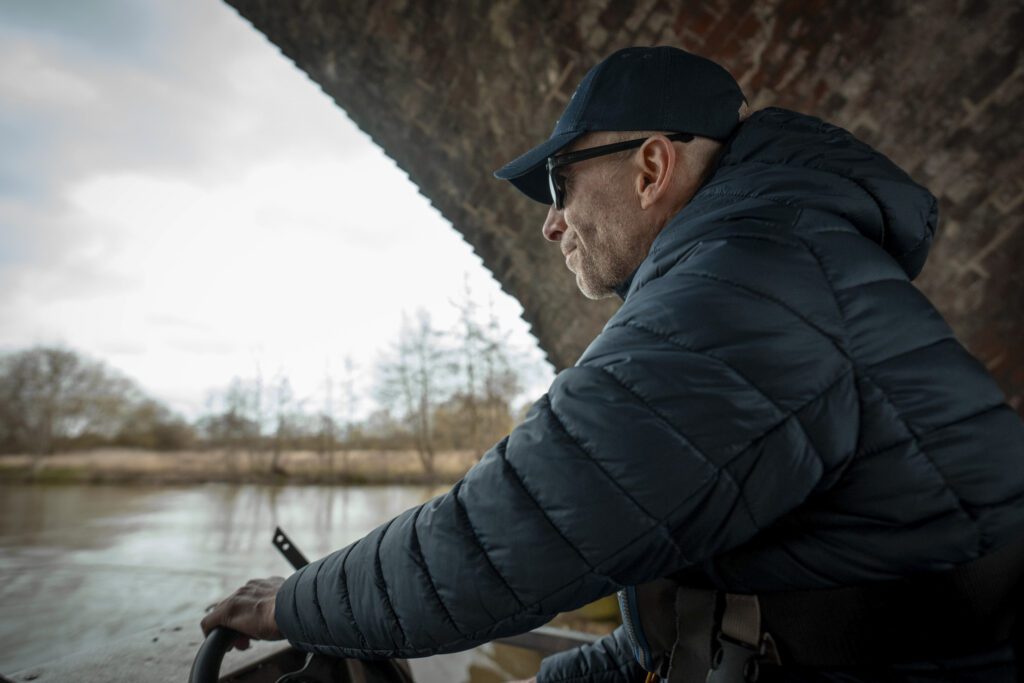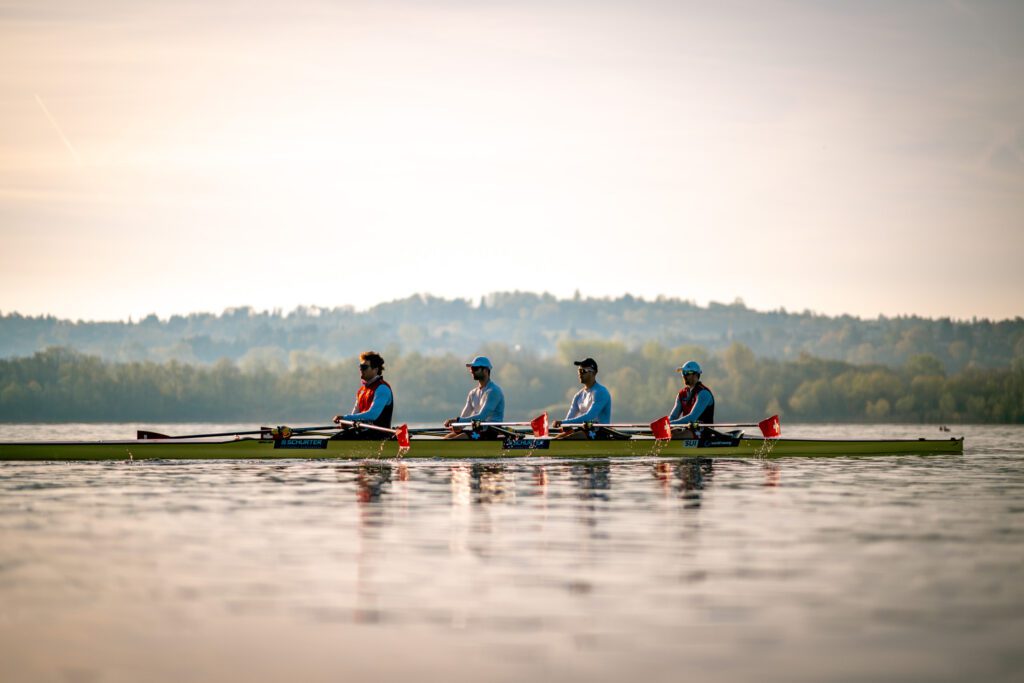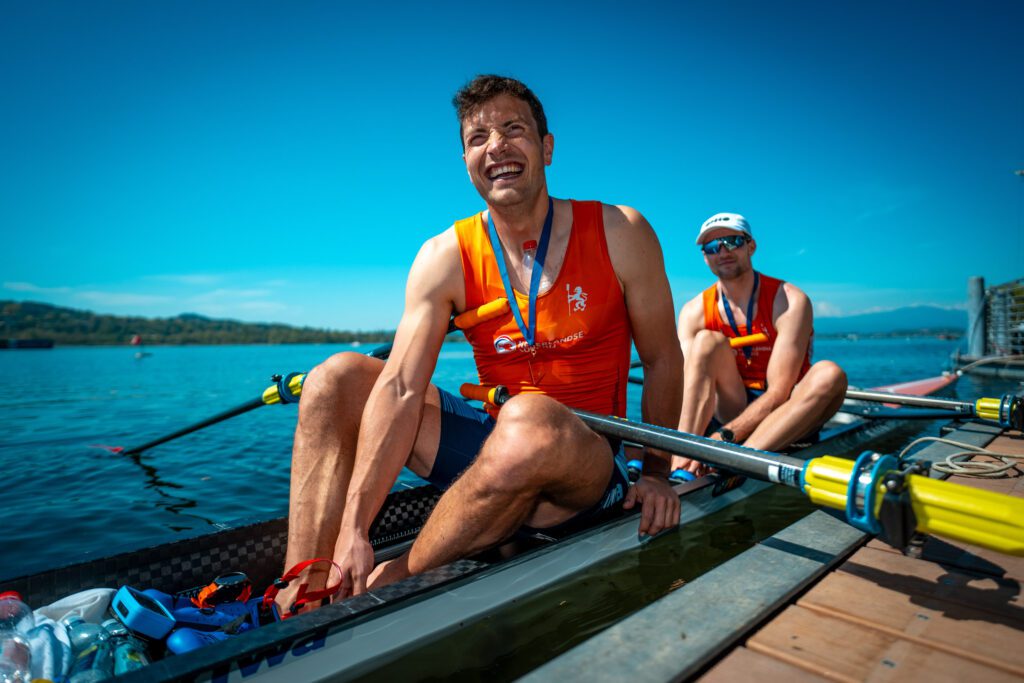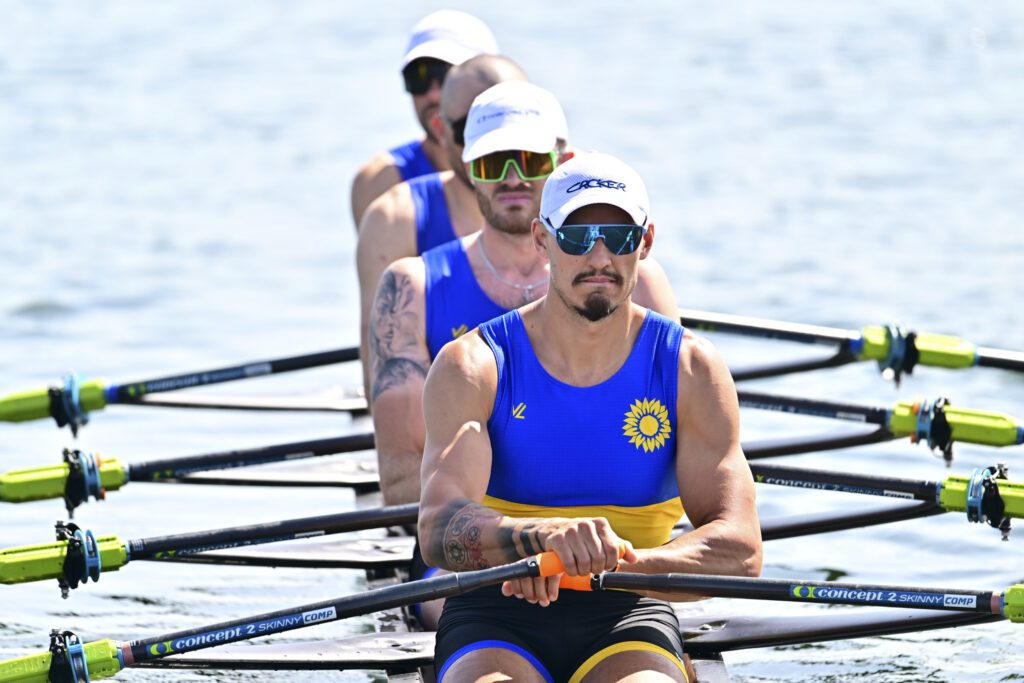Other than 1996, when the “100-year storm” wiped out the whole race, the Head of The Charles Regatta (HOCR) – the world’s largest two-day rowing event – has taken place on the shores of the Charles River in Cambridge Massachusetts every fall since 1965.
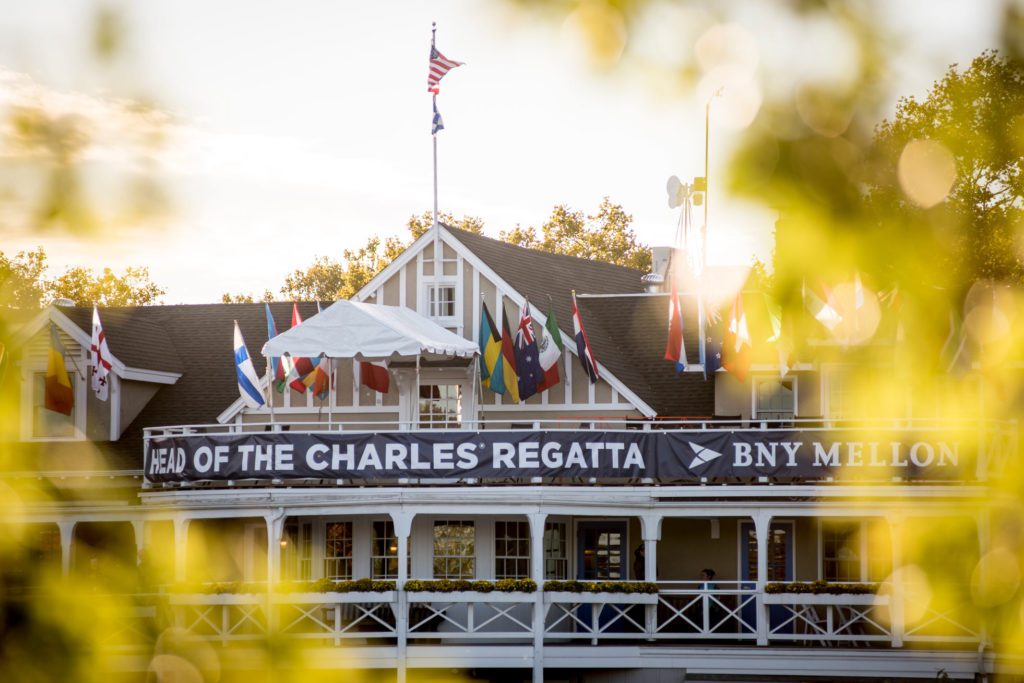
Photo HOCR HQ at Cambridge Boat Club, Cambridge, MA 2018.
Credit Benedict Tufnell
But with the global pandemic in full swing by May this year, HOCR race organisers gave themselves until the end of July to make a “go or no go decision” on what would be the 56th regatta. On July 15th, two weeks before their self-imposed deadline, it was announced with regret that the race could not safely go ahead in its usual format, and would instead run as a global, virtual event.
“We sorely wanted to run the event,” HOCR Assistant Director Mason Cox told Row360. “But we had a list of priorities and first and foremost was the safety of the competitors and our volunteers over the course of the event. After consulting with everyone from local officials, state officials, federal officials, to the infectious disease department at Mass General Hospital to really analyse every option, we determined it was impossible to go ahead with the traditional format.”
Undaunted by the size of the challenge, the HOCR team scrambled to develop a brand new, innovative and engaging event format that both rowers and spectators could take part in and enjoy from anywhere in the world. What they came up with was HOCR 4702; a week-long series of remote events running from 9th to 18th October.
These events fall under three categories: “Water”, “Erg”, and “Live”.
For the “Water” and “Erg” elements, competitors are invited to either submit a performance file (.GPX, .TCX or .FIT) for a 4,702m piece (the HOCR race distance) rowed on any body of water anywhere in the world between the 9th and 18th of October; or complete the distance on a rowing machine in the same period, and submit their time.
“Part of the challenge is to find a piece of water or row a unique course that’s not a straight line. I think people are going to get pretty creative…”
Mason Cox, HOCR Assistant Director
According to HOCR Media coordinator Dan Beckham, performance files can be recorded by any fitness tracking devices such as smart watches, smart phones, and rowing stroke-meters to log the GPS route, time, distance etc. Using the files submitted by competitors around the world, HOCR will graphically visualise every submission on a global, interactive map.
He says the on-water element is unique in that it’s really more about the course than about the times submitted; “With different water conditions all around the world, the times would be impossible to compare. So we worked with Time-Team to create a really innovative course performance submission system as well as map display of all the different courses people will have rowed across different bodies of water all over the world. When you head to the results page, instead of just having a list of times you’ll be shown a interactive world map where you can explore and click around, viewing the GPX courses rowed all over the world.”
“It should be really fun to watch people do different things like racing downstream in a tailwind, doing 5k in 10 minutes, adds Cox. “Part of the challenge is to find a piece of water or row a unique course that’s not a straight line. I think people are going to get pretty creative so we are going to recognise that in the prize giving.”
For the third part of the proceedings, the “Live” event takes place on October 17th – what would have been the first day of the traditional race weekend. It comprises a full program of remote, live indoor racing, with athletes, including a number of internationals, competing on rowing machines around the world over the 4702m HOCR distance.
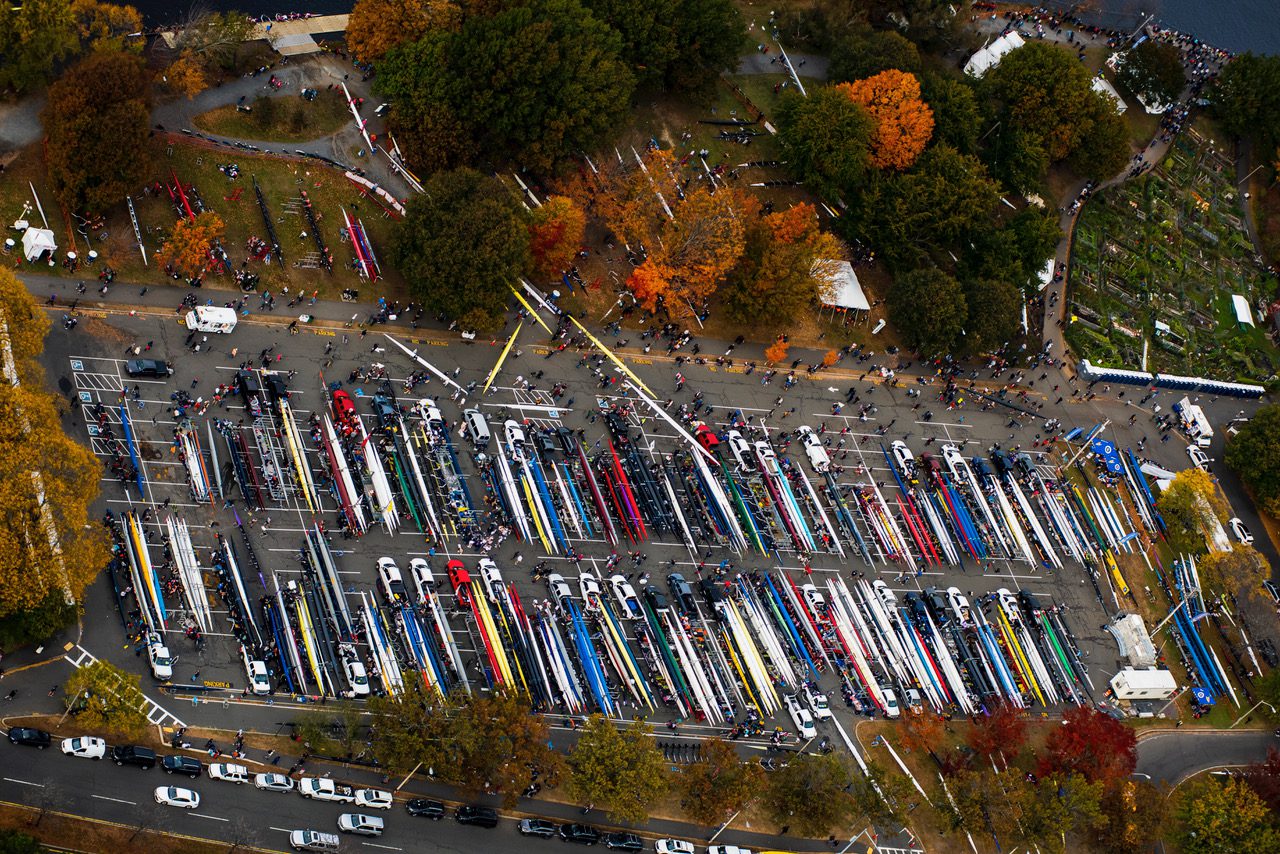
Photo Boat trailers at HOCR, Cambridge, MA, 2019.
Credit Benedict Tufnell
Races will be broadcast live during the day on Saturday October 17th, starting at midday local time. “We will see rowers from all over the world racing via Concept2 Ergs plugged in to computers, with commentary covering the marquee events,” explains Beckman. “Fred Schoch and Colleen Saville will be commentating from our studio, while we have announcers from the west coast and the UK calling in.”
“Not only will we have a visual of boats going left to right on the screen,” he adds, “but we will also have a map visualisation putting these athletes on the course, so we will be able to see where they would be on the river. For the athlete in the lead, we have a video synced to their location and speed that will play out as they are going down the course.”
The technology enabling both the water submissions and the live racing is a result of HOCR’s close collaboration with American regatta timing specialists Time-Team. “We have been working with them pretty much in lockstep since the decision was made back in July,” says Beckham. “They have done a fair amount of development work for us, and they also had a lot of this technology in place already. The priority was to try and make everything as accessible and as easy as possible for people to do. The plugin developed by Time-Team to upload the performance files is super simple to use. You can use any kind of device that tracks those kinds of files, be it a phone or a watch. It’s super easy. It goes for the erg too, it’s really simple to upload. For the live component, using any C2 machine going back to a PM3 monitor, you can just plug a USB cable into the back of it and you can race live.”
As a result, Cox says that athletes from more than 20 nations have signed up, many of which have never entered the regatta before.
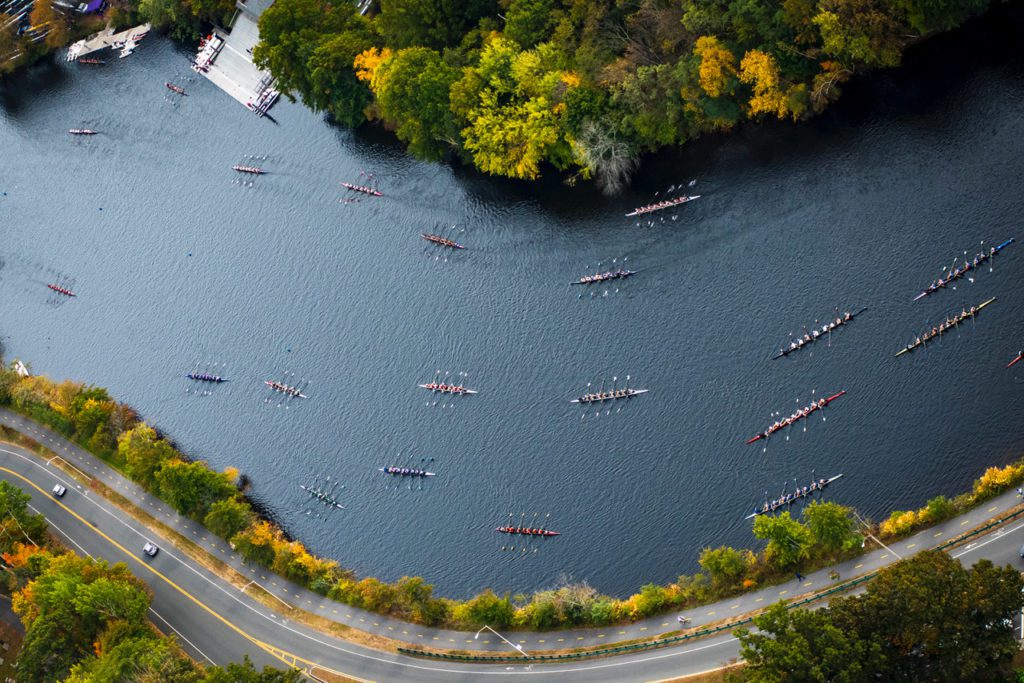
Photo HOCR 2019, Cambridge, MA.
Credit Benedict Tufnell
Priscilla Livingston, HOCR Director of Operations says all proceeds from HOCR 4702 will go directly to the grant fund created by both the Gold Cup and HOCR earlier this year in support of the Black Lives Matter movement.
They have worked closely with the Gold Cup for many years to bring international athletes to the east coast of America, to race both events. Typically taking place a week apart, athletes will come to race HOCR and then head south to Philly to race the Gold Cup.
“That’s how we get the likes of Mahe Drysdale and Emma Twigg over to race each year,” explains Livingston. “We got together with the Gold Cup in the Summer to consider what we could do for the civil rights movement that arose in May. Access to rowing in the US has always been an issue for people in under-resourced areas. We decided to stop talking about it and put our money where our mouths are.”
Livingston says the purpose of the fund is to get mentorship and capital to programs that are actively making efforts towards diversity and inclusion in under-resourced communities; “We have now received 22 applications from across America, and those are being actively reviewed by our grant review committee; made up of black indigenous people of colour in the rowing world. It was important to us that the people on the committee looked like the people that we want to see more of in rowing. It is an incredible group. This year we are aiming to distribute around 100,00 dollars (US) to between four and eight programs. Hopefully we will be able to announce those programs by the broadcast, but definitely by the end of October.”
For more info and to watch HOCR 4702, head to https://www.hocr.org.
